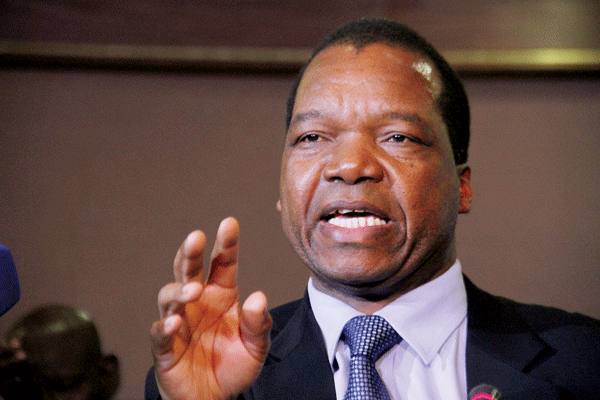
BY TAURAI MANGUDHLA
Reserve Bank of Zimbabwe (RBZ) governor John Mangudya says he is doing everything in his power to maintain a four-month stretch of exchange rate stability achieved since the introduction of the foreign currency auction system in June.
The auction system kicked off after a defenceless local unit depreciated at a frightening scale against major currencies following its introduction in 2019.
Its battering sparked fears it could tumble to US$1:$200 by December this year, from US$1:$2,5 on introduction last June.
The unit has since held its ground against the greenback, maintaining an exchange rate of US$1:$81 on the auction system for many weeks, while halting a runaway parallel market.
However, last week the Confederation of Zimbabwe Industries (CZI) warned that this was only a “fragile” stability.
“I have put both my hands on stability to make sure it is a success,” said the central bank boss, who spoke exclusively to Standardbusiness.
“It is no easy road and we are working together.
- Chamisa under fire over US$120K donation
- Mavhunga puts DeMbare into Chibuku quarterfinals
- Pension funds bet on Cabora Bassa oilfields
- Councils defy govt fire tender directive
Keep Reading
“We need to monitor and support stability and one of the major ways we can do that is by sustaining the auction system in an efficient manner.
“We pray that we continue to sustain the auction system, which has been doing wonders so far.”
Last week, central bank statistics showed that over US$300 million had been traded on the foreign currency auction system since June.
Asked by Standardbusiness how the RBZ had funded the auction system under the ongoing liquidity crisis, the central bank chief said he has enough ammunition.
“We have been collecting enough money to pay what is required in the auction system from the 20% and 30% (retention from export receipts),” he said.
“We are using our own effort from the 20% and 30%, which has been enough for the auction system.”
By 20% and 30%, he was referring to funds that exporters surrender to the RBZ in hard currencies after earning their export proceeds.
He spoke as a leading economist said exchange rate stability had been achieved by price discovery achieved since June.
Ashok Chakravarti, a member of the monetary policy committee, said stability in the economy largely revolved around the auction system.
“The auction system has been going on for four months now and it has achieved what we call price discovery. Previously there were conflicting estimates all over.
“There was no transparency or a credible source,” Chakravarti told Standardbusiness.
“Price discovery was the primary focus of the system and so far we have succeeded, more than US$300 million has been traded.”
He said the next step was to widen and deepen the auction system.
“The only issue is that the auction has about 25% or 30% of the forex (in circulation).
“The majority is still in the banking system. We can’t have this kind of a dual system.
“We need to have a unified foreign exchange market.
“That is where our target is. The idea is to widen and deepen the auction system so that it becomes real and more extended, covering the greater part of the foreign exchange in the country,” Chakravarti added.
But in a paper that was submitted to the government last week, the CZI said it was too early to celebrate.
“After a very turbulent time characterised by exchange rate depreciation and three-digit inflation levels since introduction of the new local currency in February 2019, the economy has finally seen an extended period of stability since the introduction of the currency auction system in June 2020,” the CZI said in a paper to the Finance ministry, spelling out its expectations for the 2021 national budget.
“This is a very fragile stability.
“This stability has been achieved off the back of extremely tight money supply control resulting in an acute shortage of local currency for transactional purposes.”











